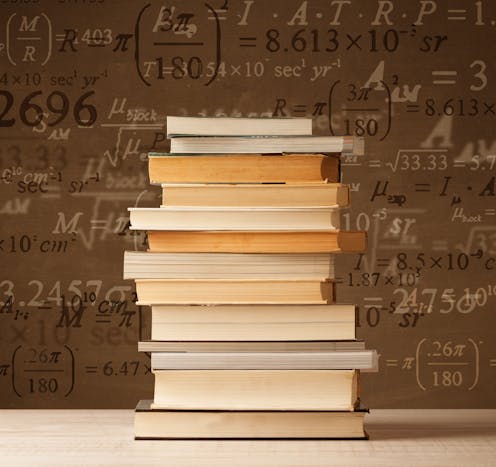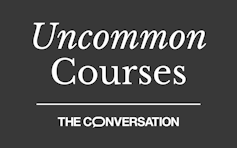

Uncommon Courses is an occasional series from The Conversation U.S. highlighting unconventional approaches to teaching.
Title of course:
The Ways Math and Poetry Can Open Your Eyes to the World
What prompted the idea for the course?
I have always enjoyed writing poetry. As a high school mathematics teacher, I recall telling my students that everything is and can be connected to math, even creative writing. Then, as a graduate student, I read about people using “I am” poem templates for young people to express who they are through a series of “I am” statements, and I thought to myself, where is the “I am” math poem template? So I created one.
I then started working on what I call problem-posing poetry, which are poems connected to a social issue and that can be used as alternatives to traditional math word problems. Working with Yousef Kara, who is a poet studying to become a teacher, we learned to see poetry as a way to understand the real world before connecting to math learning. We also began to use poetry to reflect on prior math learning. After using math poetry with high schoolers and teachers, it became apparent it should be a part of my math methods courses for future teachers.
What does the course explore?
The course explores the idea of poetry as a rich experience before, during and after math learning connected to real-world issues.
The “I am” math poem template is an example of poetry before math. The prompts used in the template allow the teacher to incorporate students’ interests when learning math in the future. For example, the last prompt shows what students are passionate about, and teachers should use that interest in their teaching of math.
Problem-posing poems like “Number Sense,” written by Ricardo Martinez, show how a poem can use actual data to become a math problem for students to solve. Poetry after math learning can best be captured by Yousef’s poem “The Wrong Bathroom, Continuously,” a reflection on trans identity related to functions that model relationships between two quantities.
This poem demonstrates concepts of math through exploring different types of continuous functions in calculus. Functions that oscillate, approach opposite infinities and disjointed functions, all of which make it impossible to find the exact value of a limit. Hence the line, “You cannot pin me down to a single point.”
Here is an excerpt from the poem:
I am a continuous function.
I oscillate My gender, in constant motion, And I don’t care if I am unrecognizable to you
I approach both infinities From the left and the right Expanding with each self discovery. Expanding far beyond your comprehension
I am disjointed Deconstructed and decolonized. I teleport between and beyond genders You cannot pin me down to a single point
It shows how learning more about math expands our vocabulary and understanding of what we experience.
Why is this course relevant now?
The beauty of using poetry is that it makes math more exciting and allows it to connect to any topic or idea. Math poetry becomes even more critical today as people need an outlet to communicate their truths about societal injustices like trans people’s rights, bans on Black history or Islamophobia. Math and poetry create new metaphors that allow people to better understand societal issues along with themselves and others.
What’s a critical lesson from the course?
A key takeaway from the course is that math is a vital part of each person, and poetry can help people see that math is all around us.
What will the course prepare students to do?
By exploring math and poetry, I believe they, as aspiring teachers, will begin to question how they were taught – for example, the use of timed tests and learning with no real-world connections. A lot of people say they don’t like math, when, in truth, they have never knowingly experienced math connected to their culture, values, desires and dreams. Math and poetry work to reclaim how we all see, experience and live with math every day.
Ricardo Martinez ne travaille pas, ne conseille pas, ne possède pas de parts, ne reçoit pas de fonds d'une organisation qui pourrait tirer profit de cet article, et n'a déclaré aucune autre affiliation que son organisme de recherche.
This article was originally published on The Conversation. Read the original article.







